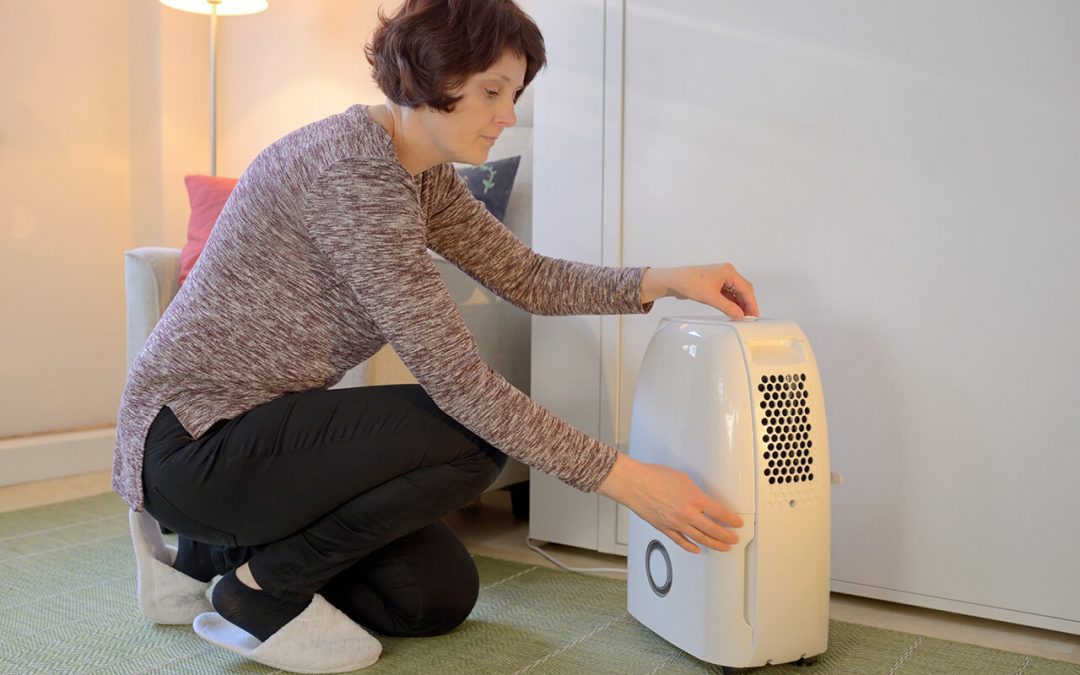Measuring Humidity in the Home
The easiest way to know what the humidity level is in your home is to purchase a hygrometer. These devices measure moisture in the air. Most people find that 30-50% indoor humidity is comfortable. Above 50%, you have the risk of mold developing because of moisture in the home.
Easy Ways to Reduce Humidity in Your Home
1. Turn on the AC
Use the air conditioner to lower humidity indoors. The air conditioning system removes moisture as it cools and circulates the temperature-controlled air through your home.
2. Reduce Humidity in the Kitchen
Run the exhaust fans in the kitchen. When you’re cooking, using the ventilation fan will pull humid air out of your home.
In homes where extreme humidity is a problem, don’t cook on humid days. The steam from boiling water and preparing food will increase moisture in the air. Instead, opt for cold sandwiches or salads or cook outdoors on the grill.
3. Use a Dehumidifier
Dehumidifiers are designed to help keep humidity in the home under control. Purchase and use a machine that will treat the humid areas of your home. Most of these appliances are sold by the square footage of the space that they can successfully treat. If humidity is a problem throughout your home, you may need to use multiple appliances.
4. Reduce Humidity by Drying Clothes Outdoors
Don’t leave piles of damp towels or swimsuits lying on the floor. Hang wet clothes to dry. To reduce humidity, hang them outside on a clothesline. The moisture will evaporate into the air outdoors. Alternatively, toss damp clothes in the dryer. This will use more electricity, but you reduce the amount of moisture that affects your home.
5. Fix Leaking Pipes
Leaks, even small ones, contribute to moisture in the air. A dripping faucet or a slow leak under the bathroom sink produces water that will evaporate into your home’s air. Repair leaks as soon as they are discovered to help keep humidity under control.
Lower Humidity is Better for Your Home
Reducing the moisture in the air will help reduce allergy symptoms. The air will be drier and mold is less likely to grow. Your home will feel more comfortable and air quality will be much improved.
Lowering humidity will also reduce the number of moisture-related repairs needed in your home. The excess moisture will slowly destroy wooden materials. Drywall can mold and, if it becomes too damp, may begin to sag or break. Flooring and furniture can also be damaged when there is too much moisture in the environment. In extreme situations, humidity can condense and create damp spots around the house. You might notice condensation on windows, damp countertops, or wet, slippery floors from the moisture in the air.
Phoenix Property Inspections provides home inspections in San Luis Obispo, Santa Barbara, and Ventura counties in California. Contact us to schedule an appointment.

